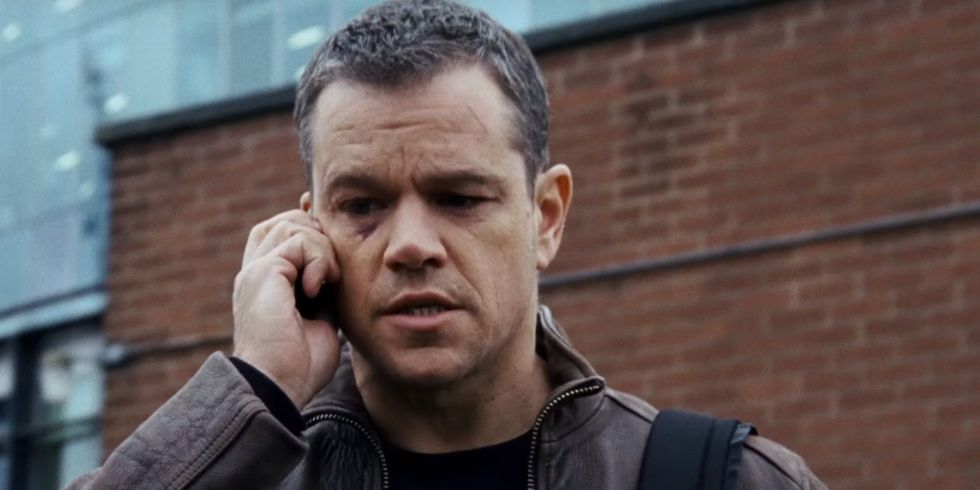[by Ross Browne]
It wasn’t all that long ago that the news hit Hollywood that Matt Damon was considering bowing out of his leading role as Jason Bourne. The untitled film he considered passing on would have been the fifth in a series based on a trilogy that we have Robert Ludlum to thank for. (Or blame for, depending on your perspective.) Ludlum stopped writing the series after book number 3, and it wasn’t until his death over a decade later that Eric Van Lustbader took the helm.
There were several reasons cited at the time but one that caught our eye here at The Editorial Department was a report of Damon’s dislike of the role based on his sense that the latest script was filled with gratuitous violence with too little character development.
Assuming this is true–and we read it on the Internet so of course it must be–then Mr. Damon’s position serves as a great example of something many writers of action and suspense fiction can learn from one of the better brains in Hollywood.
Let’s shift gears for just a minute and talk about the dreaded “slushpile”–a veritable prison for many first novels, and a death row of sorts for far too many. One of the most common reasons manuscripts never make it out of the slush pile is the lack of a fully realized plot. A novel might be filled with memorable characters, interesting settings, muscular prose, fascinating scenes, and thrilling developments, but if it’s lacking in the key element that pulls all these things together and “drives” most successful fiction–you guessed it, if it lacks true plot–then its chances of finding an agent or publisher (or doing well as an indie release) are likely to be very slim.
Some of the writers who have manuscripts evaluated here at The Editorial Department are surprised to find out that their plots aren’t working nearly as well as they thought, and sometimes that they don’t even have a plot at all. In many cases it’s the sheer number of events–sometimes very dramatic events (think explosions, bullets flying, car chases, brushes with death, etc.) that can mask plot problems or give writers a false sense of security as to the effectiveness of their plot. With so much happening, how can there possibly be a problem with plot?
The answer lies in a common misconception that plot is simply a related series of events. But as TED plot specialist Peter Gelfan points out: “Plot is story structure, not story line. An effective plot usually consists of a central conflict that starts early on, develops and builds throughout most of the rest of the novel, comes to a head near the end and then climaxes, bringing about a resolution of the conflict.”
To come at it another way, plot is sometimes best thought of as a tool or device that provides context for the events of a novel and gives them significance and meaning. What Matt Damon may know that the screenwriter of Bourne # 5 may not is that this is really hard to do without compelling characterization and some kind of character arc, where the events of the story make an impact on the protagonist. F. Scott Fitzgerald was once quoted as saying: “Plot is character and character is plot.” And we think he’s right. Because without a character who readers care about with something important on the line, and without some kind of development for that character to go through, the events of the story aren’t likely to have much meaning or lasting impact.
Here’s TED founder Renni Browne’s take on the art of characterization in support of plot: “Whatever your antagonist, he, she, or it needs to be plausible, vivid, and engaging. And the antagonist must pose a real challenge to the protagonist. There is no story without conflict, no story without a protagonist who is seriously challenged and who changes as a result of this challenge.”
Without this change, the events in the novel no matter how thrilling are too easily dismissed as meaningless. We think Matt Damon would agree.
It’s been ages since I read The Bourne Identity, but one thing I recall being quite compelling about the first book in the series was the mystery of who Jason Bourne was—to readers and to himself. Bourne’s recovery from near total amnesia was part of a brilliant foundation for a strong character arc that gave valuable context to the action in the book. So, here are a few basic questions we advise all novelists consider on the subject of plot, no matter what the genre.
- Does your novel have a clearly defined protagonist and antagonist? Most good ones do. Remember the old adage about there really only being three stories? (Man vs Man. Man vs Nature. Man vs Self.)
- Can you define the premise for your story in a single sentence? A premise is often best thought of as a “what if” question that provides the foundation for a plot. If you can’t define yours quickly and compellingly, that’s a sign that your plot may not have enough “backbone” to really work.
- What does your protagonist want? Why can’t they have it? Without some kind of thwarted desire, a true plot is almost impossible to come by.
- What is the inciting event that sets your plot into motion? On what page does it happen? The sooner the better, usually. Many writers make the mistake of making readers wait too long.
- How active is your protagonist in his or her pursuit of the desired objective? Plot and characterization tend to play best together when your protagonist is active rather than passive and effects change rather than responding to it.
- How is your protagonist different at the end of the book than the beginning? What kind of impact has the experience of the events of the novel made on his or her character? If you’re struggling to answer this question, that’s a sign that your novel may be deficient in characterization and subplot. (And that Matt Damon may not want to star in your adaptation!)
And if you’re struggling with plot, wondering if you have one, or need help improving yours, we hope you’ll give us a call at the Tucson office. We have several editors on staff who are very experienced with suspense novels and thrillers and who specialize in helping writers with story craft and developmental matters like plot, characterization, pacing, and scenecraft.






